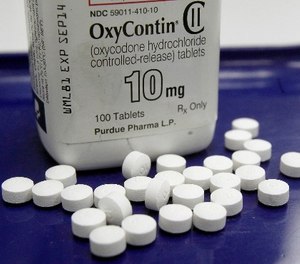
Here are some key strategies for law enforcement to develop community-based approaches to curb the current opioid crisis
By Rachel Stemerman
States have been using different approaches to combating the opioid epidemic, largely with support from federal dollars. Data from law enforcement, opioid prescriptions and mortality records all confirm substantial geographic variation in the availability of, and harm from, opioid analgesics and heroin. This is true even across counties within the same state, suggesting that local communities are at different stages of the epidemic.
Below are leading strategies for law enforcement that have been previously funded by bringing together a comprehensive community-based approach to curb the current opioid crisis in America.
Opioid addiction is a chronic medical condition that is receptive to treatment. Recent federal legislation and many state policies have been shown to be effective at increasing medication-assisted treatment (MAT) use and access to treatment. Policies and programs that improve delivery of this therapy, such as through law enforcement initiatives, have a high likelihood of being funded through state-allocated funds.
Law enforcement agencies have been coming together to address opioid addiction and recovery by filling the gap and expanding access to care for many underserved populations throughout the United States.
Despite a push by the Obama administration to expand access to naloxone as part of its opioid initiative, there remains considerable debate among clinicians, policymakers and researchers about whether providing education and naloxone kits does in fact save lives or instead discourages treatment and causes harm by reducing interactions with emergency health care providers and/or encouraging increasing risky behavior.
However, one study looked at training and distribution programs adopted within specific communities in Massachusetts and found the program did reduce annual community levels of opioid-related mortality with no statistical increase in the rate of acute care hospital utilization, suggesting the program was effective at reducing overall harm.
Another study from the National Bureau of Economic Research found that state adoption of naloxone laws was associated with a 9 percent–11 percent reduction in opioid-related deaths overall.
By March 2017, law enforcement agencies in at least 38 states had implemented naloxone programs.
HRSA’s Rural Opioid Overdose Reversal Grant Program provides $10 million to enable 30 rural communities to purchase naloxone to rapidly reverse the effects of opioid overdoses and to train licensed health care professionals and emergency responders on its use.
Expect more programs like the Rural Opioid Overdose Reversal program that fund local emergency responders and other community programs in rural areas to distribute naloxone and train providers on administration and substance abuse awareness.
The Department of Justice has allocated funding through state offices for prevention services and resources targeting law enforcement agencies. These programs are aimed at preventing individuals from succumbing to addiction along with identifying new strategies for preventing addiction utilizing law enforcement-driven programs.
Many states are providing funding for integrated approaches with public health, based on the twin premises that overdose deaths are preventable and that all communities are responsible for their own health. This includes funding and engaging law enforcement into these models.
For example, Vermont’s Project Vision , in coordination with the Rutland City Police Department, brings together a number of social service organizations, many of which are now co-located at the police department, to help address the opiate epidemic and other issues underlying criminal activity.
With all states receiving funding from the federal government to expand efforts in prevention, access to treatment and recovery, and to implement best practices, look to partner with state harm reduction coalitions, public health nonprofits and substance use professionals for funding, resources and support.
As states begin to disseminate their federal dollars, state leaders will be looking toward regional leaders for collaboration, coordination, cooperation, support and partnerships between public health, nonprofits, first responders and public safety. Organizations that build coalitions and take community-based approaches will see funding through state health departments, office of emergency medical services and the federal Bureau of Justice Assistance.
Copyright © 2025 PoliceGrantsHelp.com. All rights reserved.
